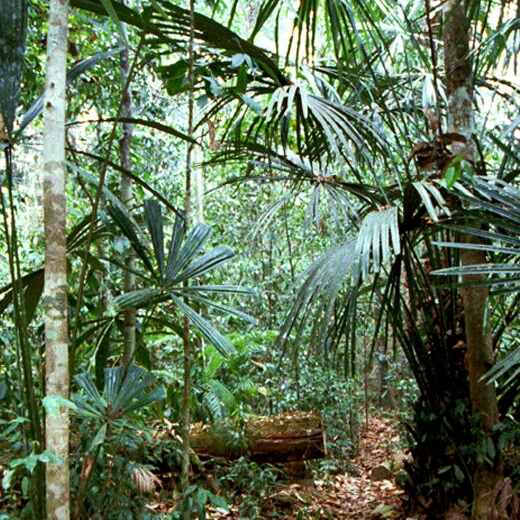
Environment
12:36, 08-Feb-2019
Climate-resilient trees to boost Indonesia's orangutan numbers
Alok Gupta

Scientists have identified climate-resilient trees that can help revive the habitat and food availability for the critically endangered orangutan population in Indonesia's Kutai National Park.
After analyzing around 250 species of trees and other plants native to the rainforest of Kutai National Park, they found Bendang (Borassodendron borneense) and Ulin (Eusideroxylon zwageri) robust enough to withstand effects of climate change.
"Given the fire-prone nature of the area, two species stand out due to their resilience to fire events," International Union for Conservation of Nature (IUCN) study, released on Thursday, said.
A recent estimate shows Bornean orangutan population plummeted by more than 100,000 individuals to 57,200 in 2017. Large-scale logging, deforestation, poaching, and land clearing for industrialized plantations reduced their number by nearly half during 1999 and 2015.
The emerging climate change threat leading to high incidence of droughts, wildfires, and water crisis led the IUCN to select trees that can endure rising temperatures. Both species of trees are "resilient to the fires and drought conditions that are expected to increase as the climate warms," researchers said.
In the last few years, large scale destruction of Indonesia's forest region has shrunk orangutan habitat. In order to restore the green cover, forest restoration projects have been launched requiring plantation of thousands of new trees.
"Kutai National Park faces many challenges in managing its area. Forest degradation is the biggest and the most pressing one," said Nur Patria Kurniawan, head of the park.

The leaves on this small Bendang tree (Borassodendron borneense) have been “trimmed” by orangutans. As the newest leaves emerge from the center, orangutans pull out the young shoots to eat the tender meristematic tissue at the base. /Photo Courtsey: IUCN, Alan Lee
The leaves on this small Bendang tree (Borassodendron borneense) have been “trimmed” by orangutans. As the newest leaves emerge from the center, orangutans pull out the young shoots to eat the tender meristematic tissue at the base. /Photo Courtsey: IUCN, Alan Lee
Apart from commercial activities, climate-induced drought conditions, which triggers wildfires and causes a range of other negative impacts on the species of Kutai National Park, has also affected orangutans' food source.
While the two species of trees will provide nesting place to the great apes, researchers also identified seven species of trees that are "most important food plants for orangutan."
The preferred species of trees for food source include Dracontomelon dao, Merremia mammosa, Kleinhovia hospita, Alangium hirsutum, Dillenia reticulata, Callicarpa pentandra, and Ficus obpyramidata.
"Selecting climate-resilient tree species can help protect the park and the orangutan population it shelters from the impacts of climate change," Alan Lee, lead author of the study said.
"We hope that the information in this study is taken up by all those working to restore this unique area of rainforest," Lee added.
Researchers suggested planting the two species of climate-resilient trees in the buffer zone of Kutai National Park to reduce the spread of fire.
Seven plants identified as crucial food sources for East Bornean orangutans should be planted alongside vines that the apes use for moving through the forest and trees which they prefer for nesting, the study added.
(Adult male orangutan at Samboja Lestari, East Kalimantan, in Indonesia /Photo courtsey: IUCN, Alan Lee)

SITEMAP
Copyright © 2018 CGTN. Beijing ICP prepared NO.16065310-3
Copyright © 2018 CGTN. Beijing ICP prepared NO.16065310-3